Bright ideas: How to light your kitchen
The secret to successful kitchen lighting is creating a variety of moods at different times of day, says Sally Storey.
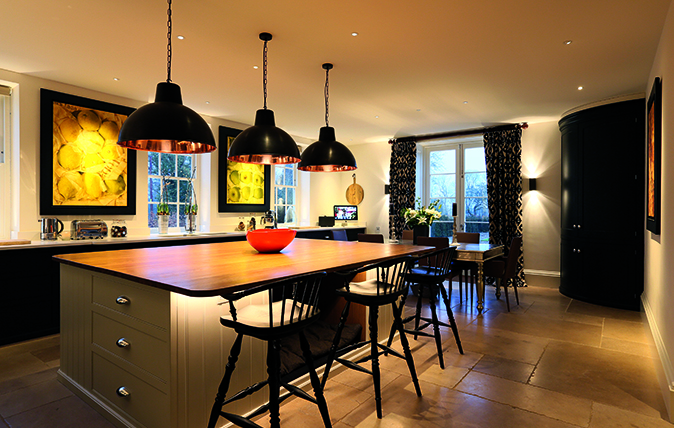

Kitchen lighting, particularly in large kitchen-breakfast rooms, needs to be the most flexible scheme in a house. It makes sense to approach a large kitchen as three different spaces: the kitchen, the dining table and the living area.
A grid of lights in the ceiling means it’s really hard to create a distinct atmosphere in each zone, so, instead, employ washes of light on the walls and art, atmospheric or intimate pools of light over specific elements and strong task lighting on work surfaces. Dimmers are essential to set these moods, but you don’t want more than four as a larger bank just becomes confusing.
A simple control system—I use Lutron or Rako – is definitely a way to overcome this and, these days, the functionality is so much better that it doesn’t need to be overly complicated. I tend to include four lighting scenes in kitchens that are preset: daytime, casual supper, more formal dining and minimal night lights for TV watching – these give the perfect balance.
Architectural lighting
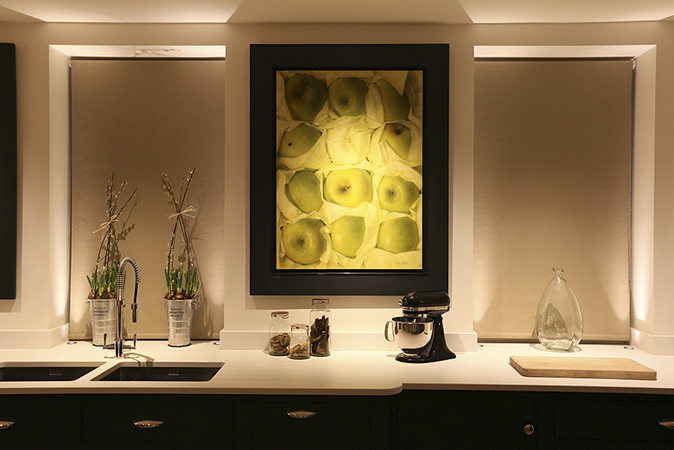
I like to use a very low watt narrow beam to uplight both sides of a window or windows. Setting it into the window reveal gives the impression of candlelight at night time. If you’ve got French windows in the room leading out into the garden, consider adding some lights to the immediate area outside – it helps to draw the eyes and enhances the feeling of space when the curtains are open.
Lighting an island
This island is often a focus of the kitchen that tends to divide the space between the working kitchen and the living or entertaining area. As a result, it’s a good place to include a decorative lighting element, such as a row of statement pendants. They will set the tone and the mood of the room and can be supplemented with more practical lighting. Also, unlike a dining table that you might want to move for a larger party, over-island pendants won’t get in the way. Add some downlights in between the pendants to ensure that you have good task lighting on the work surface below and put them on a separate circuit so you can turn up the task element, but dim the pendants for ambience.
Another way of lighting the island – especially one that has a breakfast-bar element to it – is to add a little LED strip below the overhang. It’s a trick employed by hotels and bars and throws light on the stools which can be particularly effective if they are brightly-coloured. Equally, some kitchen islands stand on legs so another technique would be to put a strip around the bottom edge that makes it look as if the island is floating above the floor. It adds another element of warmth and soft light to the room.
Counter tops
Grids of symmetrical positioned downlights often only light the floor and not the task areas. Small, flat under-cabinet lights are an ideal alternative as they ensure the best shadow-free light in the area where you do most of the work. A more contemporary look would be to fit a linear LED strip under the cabinets. Further task lighting can be introduced through using small downlights such as Polespring LEDs.
Sign up for the Country Life Newsletter
Exquisite houses, the beauty of Nature, and how to get the most from your life, straight to your inbox.
Position these above the edges of the counter top and angled across to create glare-free lighting; alternatively angle them on the cabinets – the light will be diffused down the cabinet doors, but will help to illuminate the insides when open. Using some directional light on artwork is another good technique as it reflects off the paintings and becomes additional countertop lighting.
Lighting around the cooker
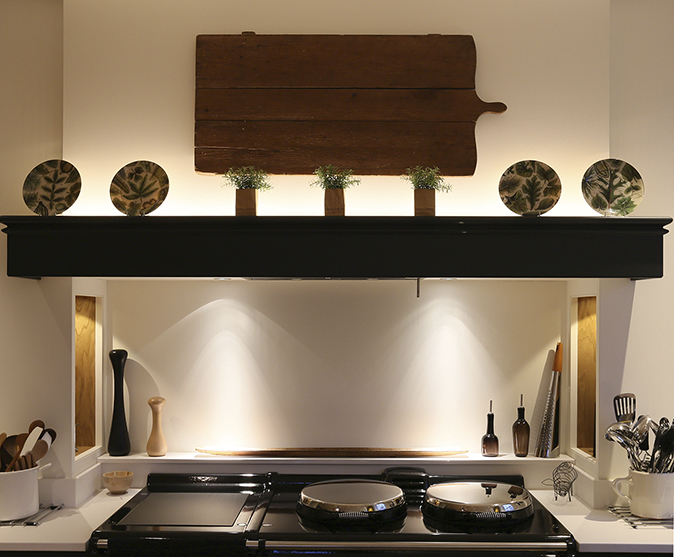
Cookers that are recessed into a chimney space provide a good spot for waterproof downlights set flush in the plasterwork. Ours are safe enough to use in a shower, so are totally sealed and wipeable – critical in the space above a cooking area. Two or three of them, positioned quite close to the back wall, work well to create drama out of splashback tiles or glass.
If there’s a mantelpiece or shelf above the cooker, I sometimes like to use a warm LED strip such as the Contour HD24 which has a Tungsten-equivalent light that washes over any decorative plates or sculptures.
Glass-fronted cabinets and open shelves
I love lighting glassware by placing a strip at the back of a shelf as the light bounces off the back wall and the glassware is silhouetted by light from behind. In my kitchen, I’ve backlit the shelves from above and below so they look like they’re floating off the wall – it means that there’s one less need for a downlight.
Equally, don’t forget the space above the cabinets if the room has very tall ceilings, as here you can put some uplights that, again, reduce the number of downlights required.
Dining area
For a softer light, wall lights work well here – be they modern up-and-down lights or something more traditional. I also like to use a narrow-beam downlight to focus on the centrepiece of the table. Either side of this, I’d use two wider-beam downlights to create enough light for homework or reading the paper. Then, I might add some table lamps and, if there’s a dresser with a display, this is another opportunity to introduce a further light source by running a linear LED either vertically down the insides of the dresser or horizontally across the shelves. It introduces a soft glow to the room.
The best approach is to ensure there are more layers of light all around the room and less lights in the ceiling—that way you can create pockets of mood and atmosphere easily.
(www.johncullenlighting.com; 020–7371 9000)
Country Life is unlike any other magazine: the only glossy weekly on the newsstand and the only magazine that has been guest-edited by HRH The King not once, but twice. It is a celebration of modern rural life and all its diverse joys and pleasures — that was first published in Queen Victoria's Diamond Jubilee year. Our eclectic mixture of witty and informative content — from the most up-to-date property news and commentary and a coveted glimpse inside some of the UK's best houses and gardens, to gardening, the arts and interior design, written by experts in their field — still cannot be found in print or online, anywhere else.
-
 Two quick and easy seasonal asparagus recipes to try this Easter Weekend
Two quick and easy seasonal asparagus recipes to try this Easter WeekendAsparagus has royal roots — it was once a favourite of Madame de Pompadour.
By Melanie Johnson
-
 Sip tea and laugh at your neighbours in this seaside Norfolk home with a watchtower
Sip tea and laugh at your neighbours in this seaside Norfolk home with a watchtowerOn Cliff Hill in Gorleston, one home is taller than all the others. It could be yours.
By James Fisher
-
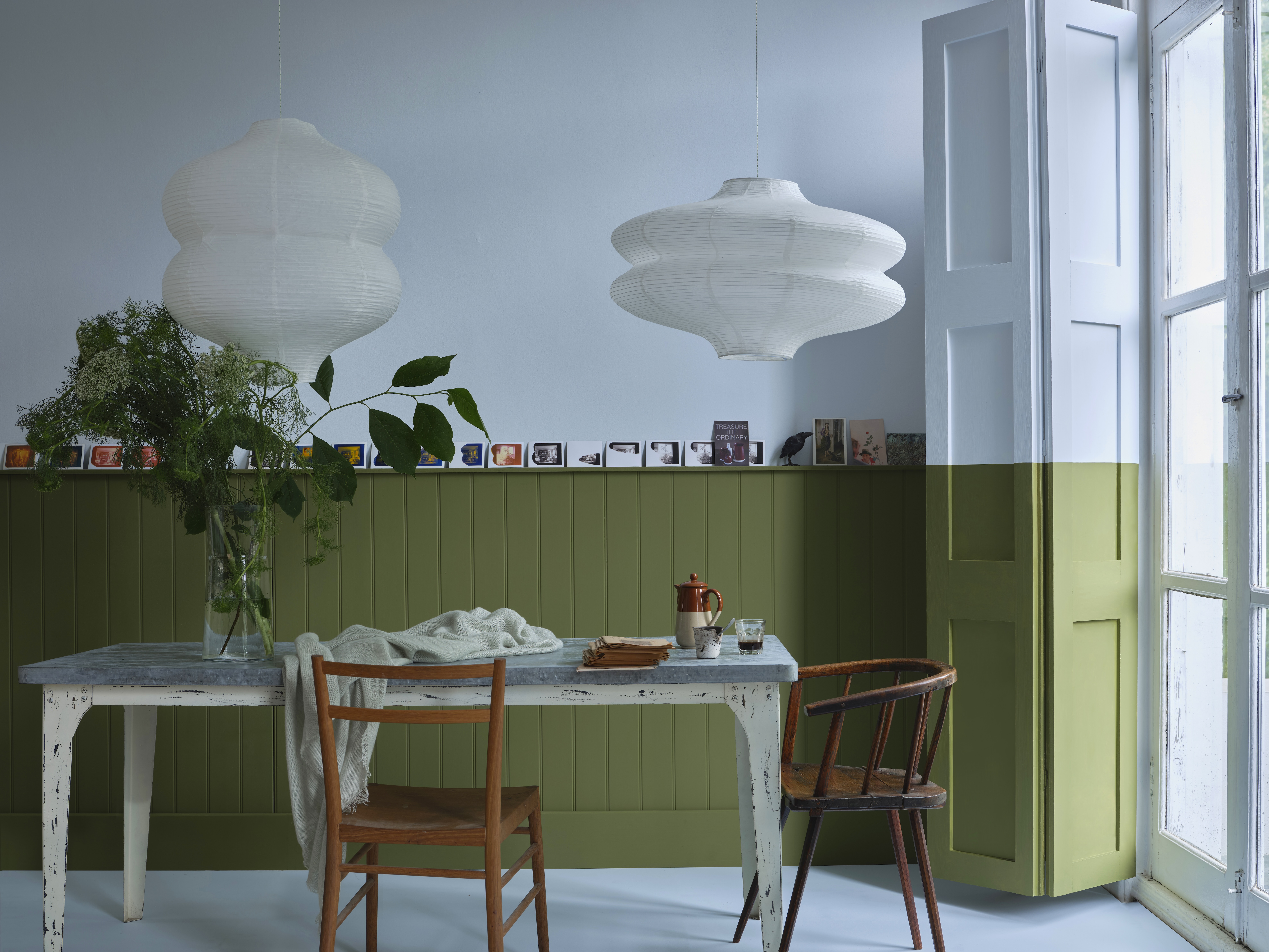 John Sutcliffe — The man, the myth and the paint-naming legend behind Dead Salmon and Elephant's Breath
John Sutcliffe — The man, the myth and the paint-naming legend behind Dead Salmon and Elephant's BreathBy Carla Passino
-
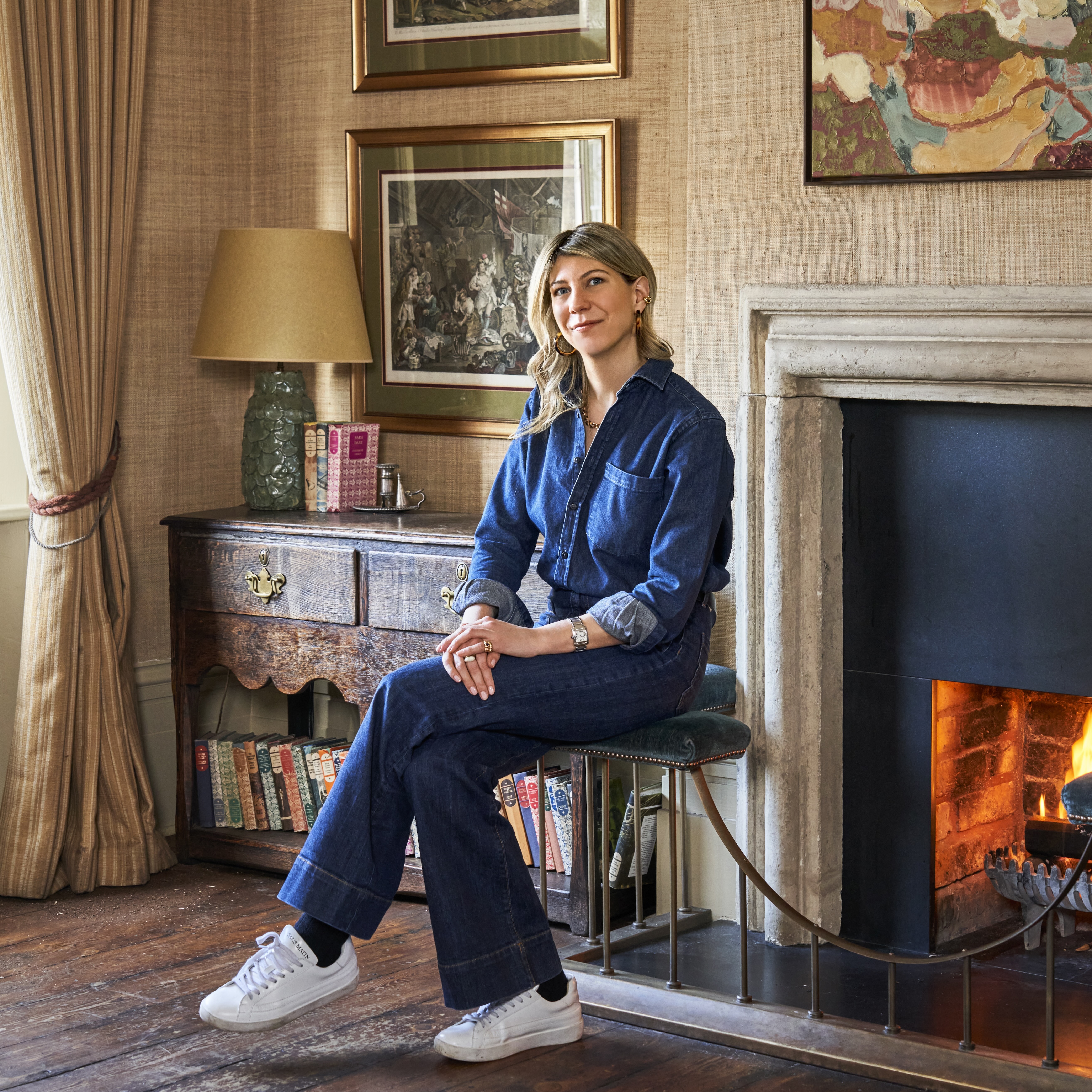 The power of the youthful gaze: A new generation tackles modern day design conundrums
The power of the youthful gaze: A new generation tackles modern day design conundrumsHow is a new generation of interior designers responding to changing lifestyles, proliferating choice, the challenges of sustainability and the tireless demands of social media?
By Arabella Youens
-
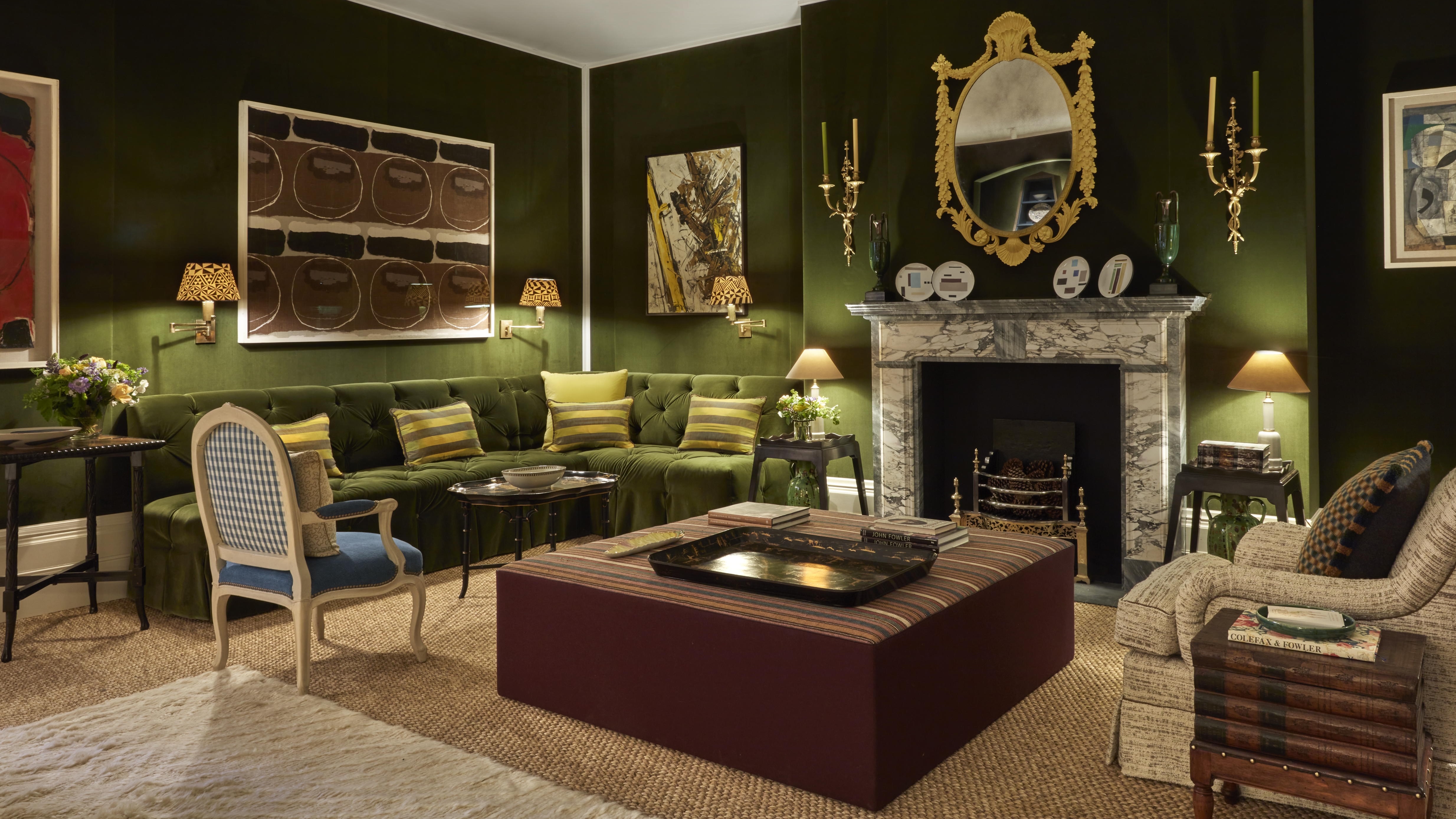 'Rooms can be theatrical and comfortable at the same time': Top tips for decorating with conversation in mind
'Rooms can be theatrical and comfortable at the same time': Top tips for decorating with conversation in mindCarefully placed furniture encourages conversations, says Emma Burns, of Sibyl Colefax & Fowler
By Country Life
-
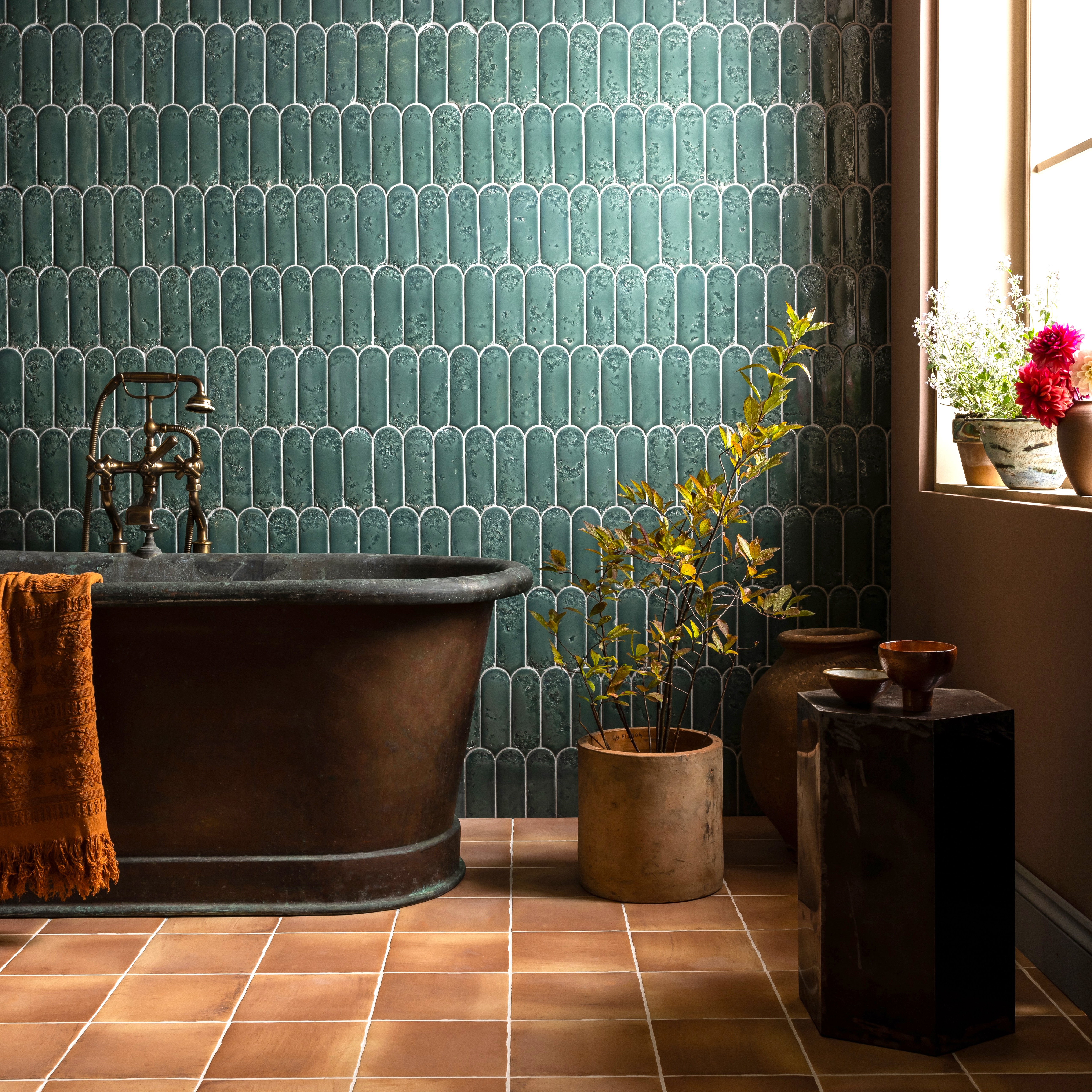 A tub carved from a single block of San Marino marble — and nine more beautiful things for the ultimate bathroom
A tub carved from a single block of San Marino marble — and nine more beautiful things for the ultimate bathroomThere's a bathroom out there for everyone — whatever your preferred style.
By Amelia Thorpe
-
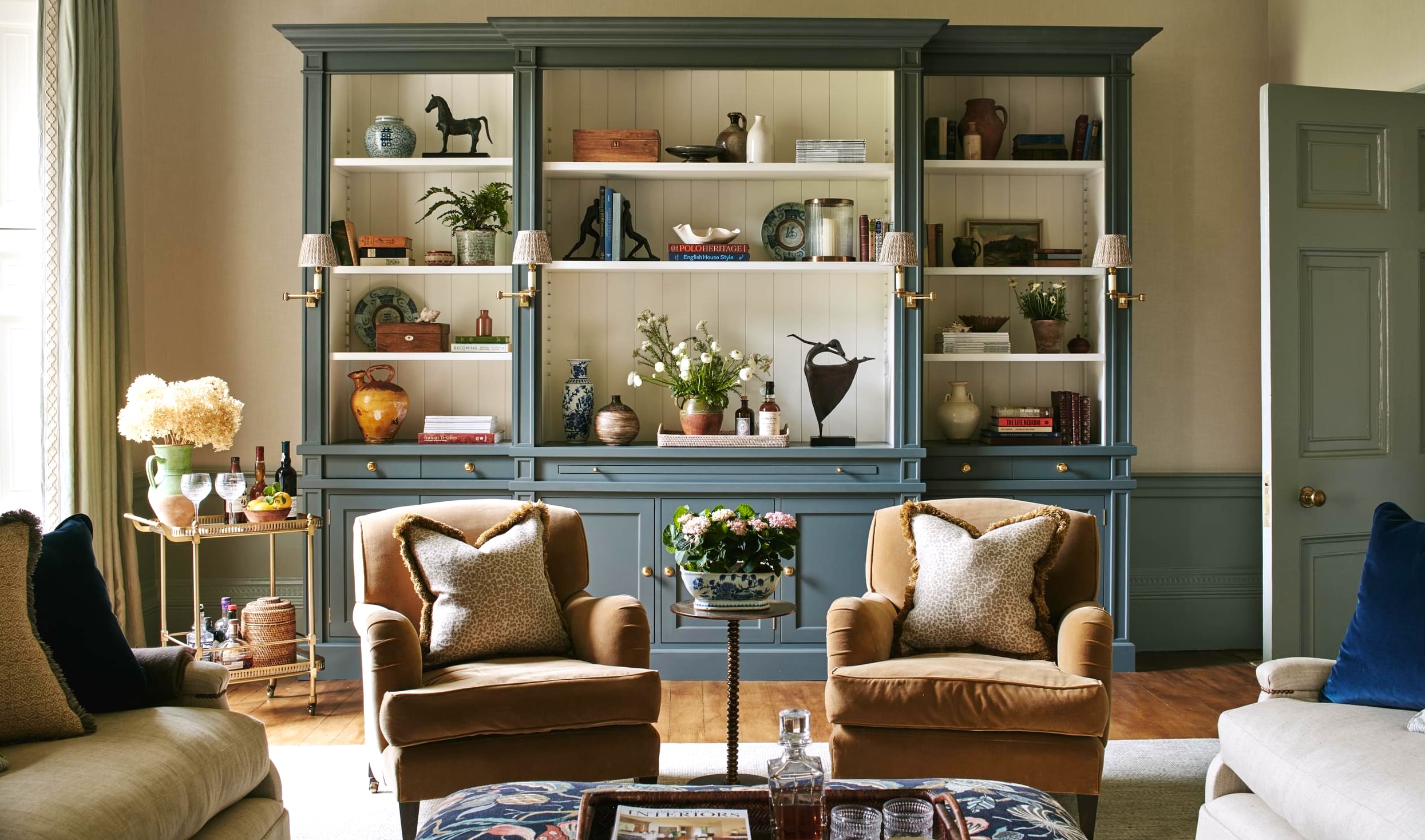 In search of the perfect comfy armchair
In search of the perfect comfy armchairWhat makes the ideal cosy, comfortable armchair? Arabella Youens asks some of Britain's top furniture experts to find out.
By Arabella Youens
-
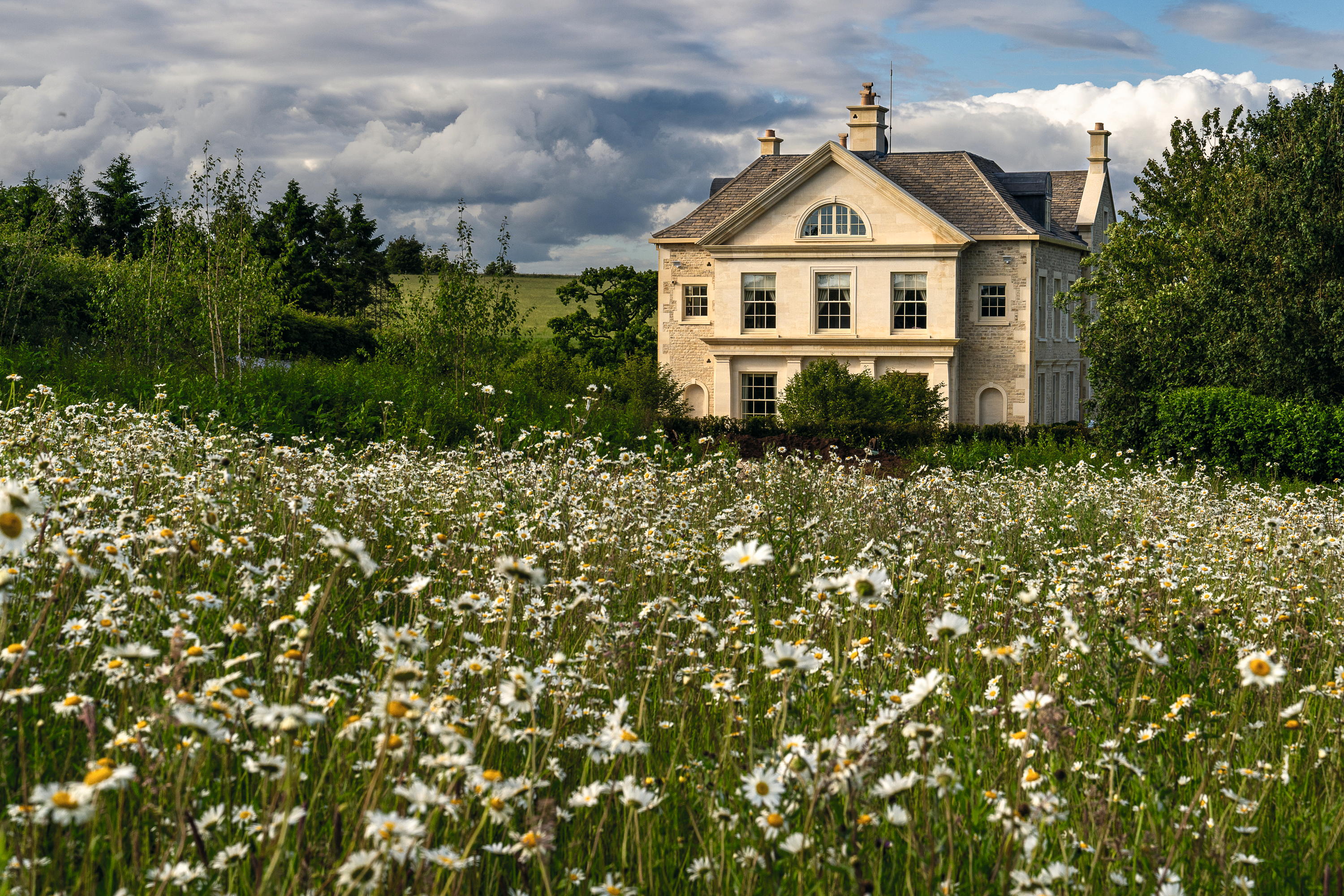 All the new entries in the Country Life Top 100 for 2025
All the new entries in the Country Life Top 100 for 2025Each year, our Country Life Top 100 is completely revised and updated — and several new names appear.
By Country Life
-
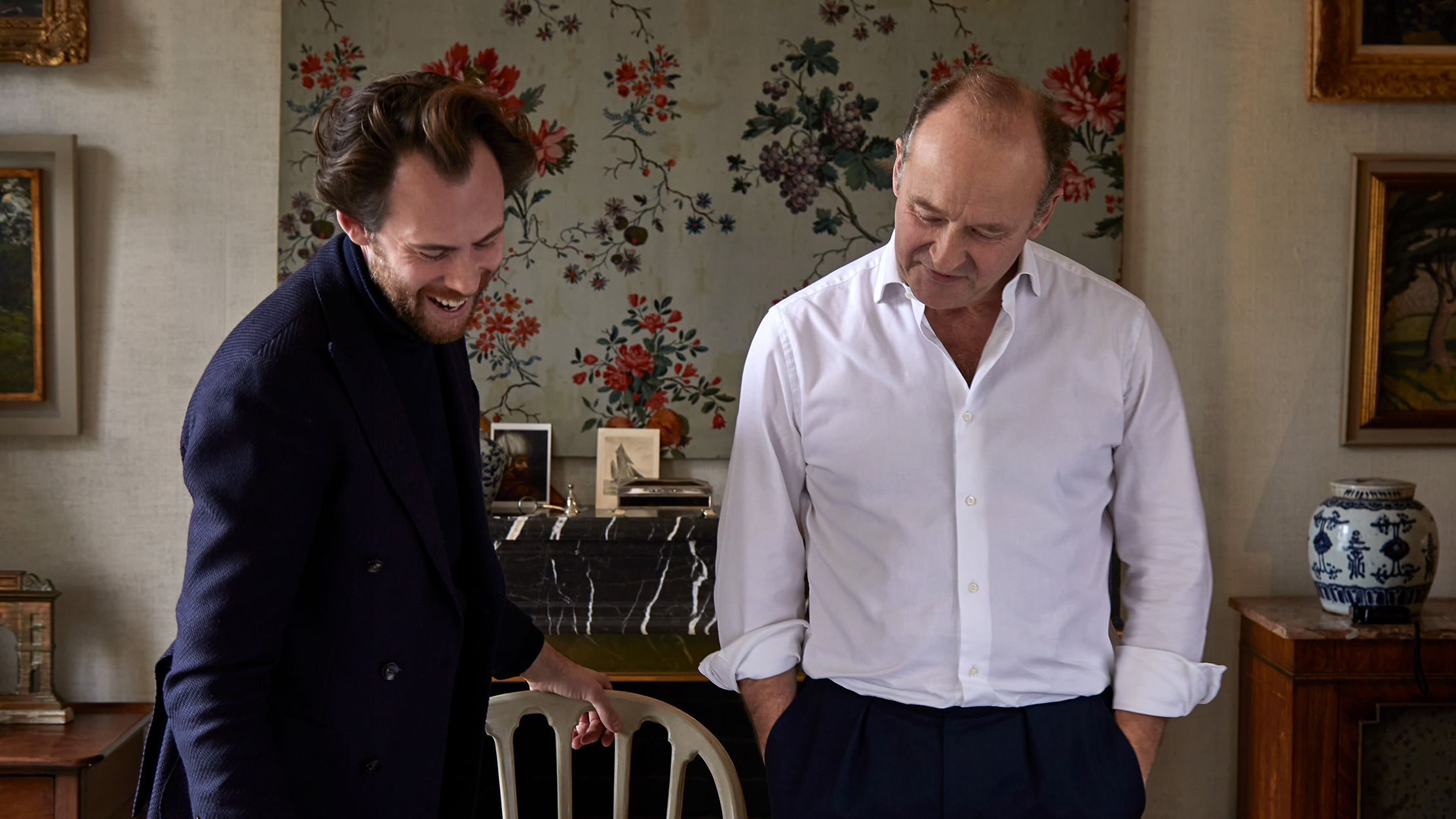 The timeless elegance of English country house style, with Guy Goodfellow and Steven Rodel
The timeless elegance of English country house style, with Guy Goodfellow and Steven RodelTwo of Britain's top interior designers share their wisdom with James Fisher on the Country Life Podcast.
By James Fisher
-
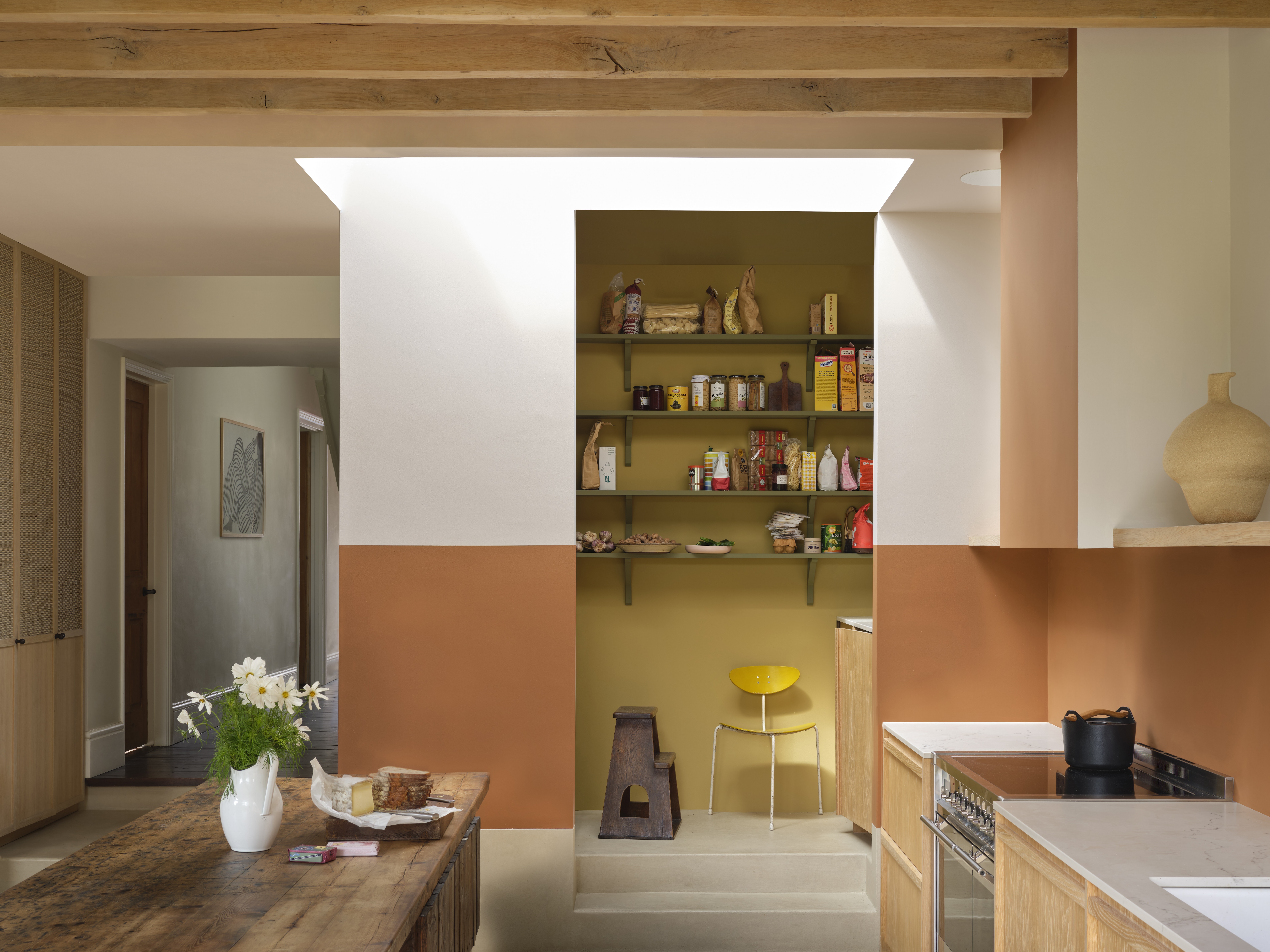 Dawn Chorus: Meet Farrow & Ball’s new paint colours, shop the must-have hotel merchandise and find out what Tom Parker Bowles likes to order from Greggs
Dawn Chorus: Meet Farrow & Ball’s new paint colours, shop the must-have hotel merchandise and find out what Tom Parker Bowles likes to order from GreggsIt’s time to redecorate because paint connoisseurs Farrow & Ball have added 12 new colours to their palette.
By Rosie Paterson